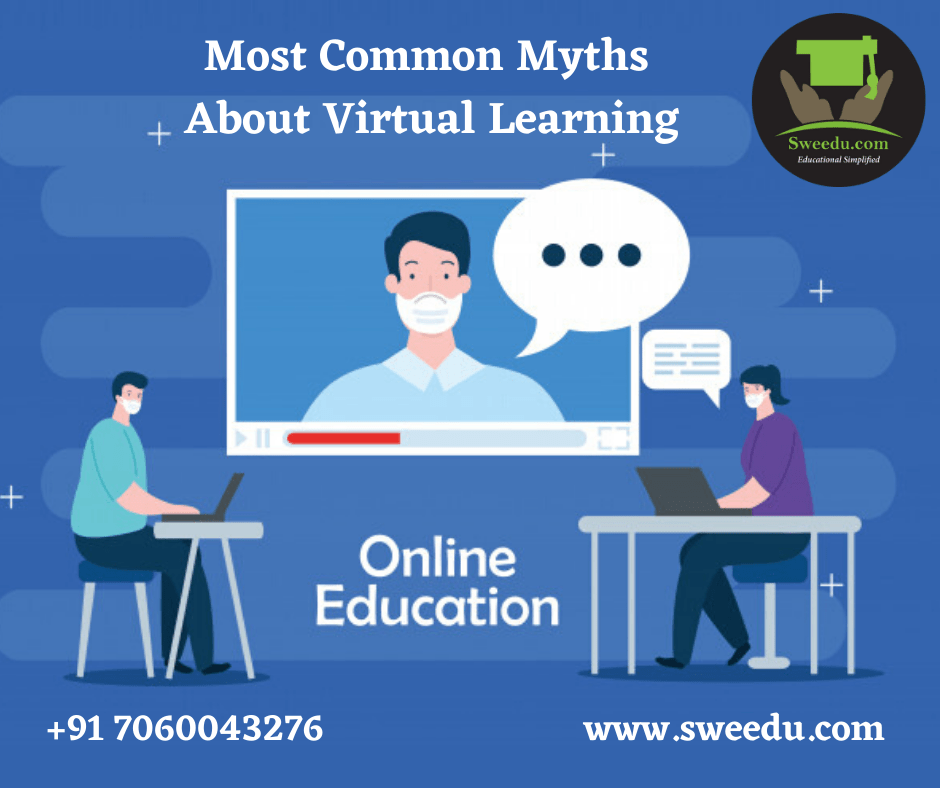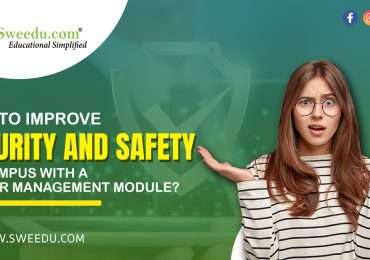
As computers become more commonplace, they are revolutionizing almost every aspect of human life. Education is now no longer isolated from this change. After the increase in online education resources and tools to learn almost anything with the internet, schools too soon adopted using education technology like School Management Software. Within that is virtual learning.
Virtual learning is the use of computers to deliver instruction to learners or students. Unlike traditional learning which involves interaction between students and teachers, virtual learning doesn’t involve physical instruction. It uses computer software or an internet connection to facilitate the interaction.
Similar to most new things around us, virtual learning also comes with its fair share of myths and misconceptions. In this blog, we will be looking at those and learning the truth behind them.
Myths about Virtual Learning
As virtual learning becomes increasingly popular these days, so do the myths about it.
Below we have listed 8 such common misperceptions about online learning along with the truth about it. Are you ready to dive in?
Let’s go…
Myth #1: Virtual Learning Primarily Involves Spending Time At A Computer.
Since online learning has a lot to do with a computer or a smart device like a mobile phone or tablet, this misconception can very easily sound believable. But that is not completely true.
Truth: Teachers can choose how much time they want their students to spend on the computer. They can increase the number of offline activities to allow them some screen-off time. A lot many teachers used this way to induce creativity and skills in their students while being away from school.
Myth #2: Students are taught by a computer, not a teacher.
The term “Virtual Learning” may seem like something out of a science fiction movie to some but the process of teaching & learning cannot be made possible without human interaction.
Truth: Virtual learning tools connect students with their teachers via online platforms. Whether the class is live or a pre-recorded video, teachers are an inseparable part of their learning. In fact, for the most part, even the resources that students use to learn on their own are also provided by their teachers.
Myth #3: Virtual Learning Is All About Technology.
Learning things online does involve technology like school software and hardware like computers and smartphones. However, saying that it’s all about technology can be a bit of a stretch considering how familiar everyone is with these software and hardware technologies around them.
Truth: The technology that online learning uses is a familiar one for teachers & students. Moreover, the software is user-friendly to ensure that every student and their parents can easily use it to manage to learn through their smart devices.
Myth #4: Virtual Learning Limits Social Interaction.
Online classes are often conducted with every student on a single platform. This means that the teacher is connected to each student while the students are also interconnected with each other and the teacher.
Truth: Online learning classes connect students & teachers with each other virtually. Depending on the task the teacher provides, the students can connect with each other seamlessly over digital channels to form groups and complete the task.
Myth #5: Virtual Learning Is Best Suited For The Homeschooled.
Virtual learning is for anyone who understands and appreciates flexibility and mobility in studying. Be it the teacher, the administrator, or the student.
Truth: Online virtual learning offers great flexibility to its users. Imagine you can’t go to school for some reason, but you have your phone and a space where you can easily focus on your class. You can join your online classes and start learning virtually without compromising your credits or attendance.
Myth #6: Students are isolated and lonely.
When the students connect with their teachers and friends using their computers or smartphone, it is easy to think that they may get lonely. This is true up to some extent. However, with the right teaching approach, this problem can be solved too.
Truth: Including student interaction with classmates and parents for learning and completing various educational tasks can help students feel less lonely and isolated.
Myth #7: Online courses are easier than face-to-face courses.
That depends on the courses you choose to study. Online courses can be ones linked to your educational institution or they can be standalone courses segregated for beginners, intermediates, and advanced students.
In both cases, the student will have the same level of course difficulty or can choose the level of difficulty whenever they want.
Truth: Whether you study online or offline, the level of difficulty will depend on your institution in case of connected online classes or your choice if you go for standalone courses.
Myth #8: Cheating is more prevalent in online courses.
Sure students have to answer their exams remotely using their smartphones or laptops. Tools like a proctoring module or integration help education institutes ensure that students answer their exams honestly.
Truth: The proctoring system integrated with education ERP software alerts the teacher of any irregularity during online exams. This helps in reducing instances of cheating during online exams.
EndNote
To conclude, online virtual learning can be a flexible alternative to traditional learning practices to include more students.
Here is the list of myths we busted in this blog:
- Virtual Learning Primarily Involves Spending Time At A Computer.
- Students are taught by a computer, not a teacher.
- Virtual Learning Is All About Technology.
- Virtual Learning Limits Social Interaction.
- Virtual Learning Is Best Suited For The Homeschooled.
- Students are isolated and lonely.
- Online courses are easier than face-to-face courses.
- Cheating is more prevalent in online courses.
These are the most common virtual learning myths. These myths can form perceptual blockages which can limit the potential benefits of Virtual learning—as such, exposing them is a critical step toward unleashing the full potential of this new type of learning.
Tell us which myths about online learning did you believe in. Share your thoughts about the blog in the comments below.




